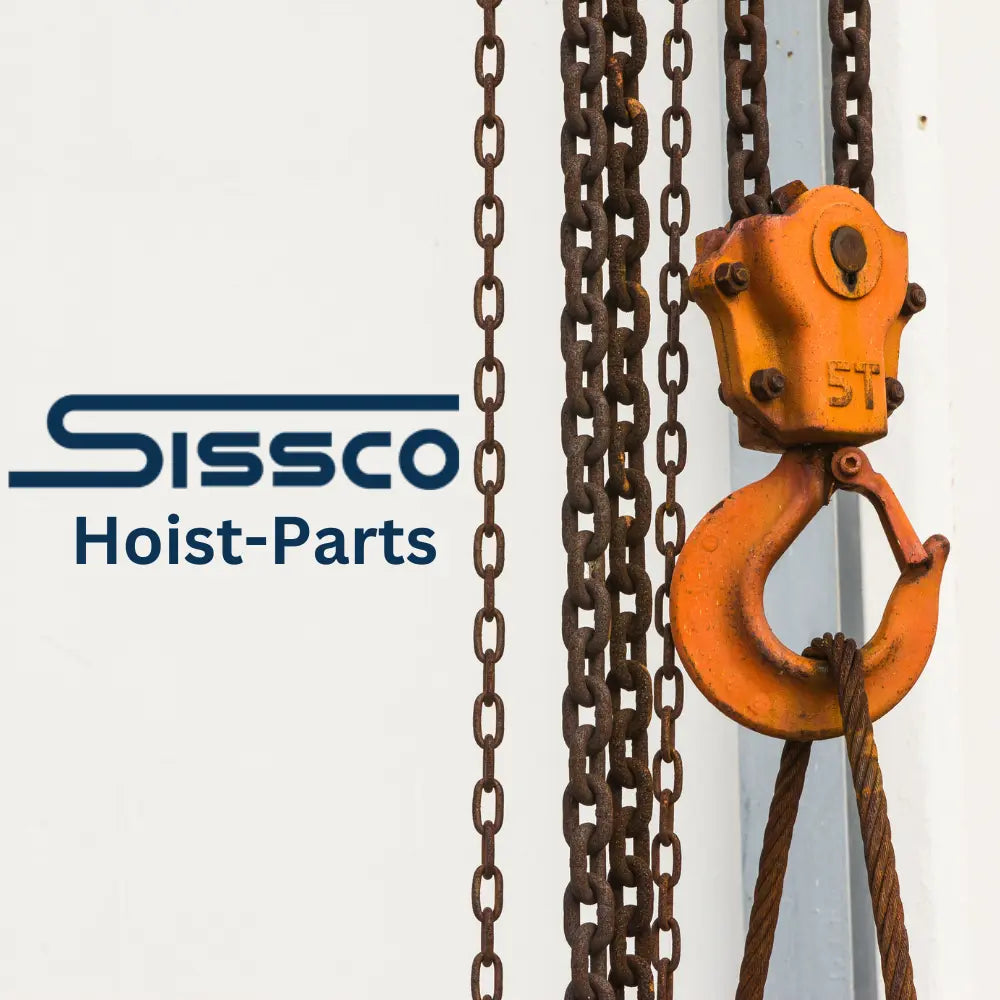
One mistake can turn a routine lift into a severe hazard of below-the-hook lifting operations. Load misalignment—a common but preventable issue—often occurs when the lifting attachments (hooks, slings, or clamps) are not properly centered or secured. Misalignment puts uneven strain on lifting devices, like hoists, increasing the risk of tipping, dropping loads, or even structural damage. Operators and safety personnel must work together to ensure correct alignment and load distribution to maintain safety and efficiency.
Whether you're using Budgit, CM, or rotary lift hoist parts, following manufacturer specifications is not just a recommendation—it's essential to maintaining balanced and safe lifting operations.
The Dangers of Misaligned Loads
Misaligned loads create a dangerous imbalance during the lifting process. When the load is not properly centered, the lifting equipment must compensate, causing uneven tension on the hooks, slings, or clamps. This can lead to many serious consequences, including unbalanced load handling, excessive wear on hoist parts, and increased risk of equipment failure.
- Unbalanced load handling:The load shifts unpredictably, increasing the risk of tipping or falling.
- Excessive wear on hoist parts:Components like hooks or clamps may wear out more quickly, mainly if not designed to handle off-center loads.
- Increased risk of equipment failure:Load misalignment can damage the hoist, as uneven force distribution strains the machinery.
Correcting Load Misalignment: Simple Steps for Safety
Preventing load misalignment is essential for ensuring safe below-the-hook lifting. Proper alignment involves carefully checking each aspect of the lift to ensure the load remains stable from start to finish. Misalignment risks tipping or shifting the load and putting undue stress on the hoist, whether using Budgit, CM, or rotary lift hoist parts. Here are key steps to help operators correct and prevent load misalignment for safer lifting operations:
1. Use Manufacturer-Approved Parts
Using the correct parts is the first and most crucial step in preventing misalignment. Manufacturer-approved components, such as Budgit hoist parts, are specifically designed to handle the loads they are paired with. This ensures that each part of the lifting setup can bear the necessary weight and maintain balance. Non-approved or worn parts increase the chance of misalignment, leading to dangerous operational failures.
Before any lift, verify that all hoist parts meet or exceed the required load rating and replace damaged or worn parts. This adherence to manufacturer specifications should instill a sense of security and confidence in the equipment being used.
- Check Alignment Before Lifting
Misalignment often happens when the lifting attachment is not centered over the load's center of gravity. A slight offset can cause unbalanced lifting forces, resulting in load shifts or tipping. Position the hook or sling directly over the load's center of gravity. Consider using a plumb line or laser alignment tool for large or irregularly shaped loads to help you achieve precise alignment.
- Verify Weight Distribution
Even when the load is centered, uneven weight distribution can cause it to shift during lifting. This is especially true for irregularly shaped loads, where one side might carry more weight than the other. Inspect the load thoroughly, paying attention to sections that might carry more weight. Adjust the rigging or use additional attachment points—like a multi-leg sling or spreader bar—to distribute the weight evenly.
- Secure Attachments Properly
Loose slings, clamps, or hooks can cause the load to move unpredictably during lifting, resulting in misalignment. Ensuring secure attachment is critical to prevent shifting mid-lift. Before each lift, double-check all connection points. Ensure safety latches on hooks are fully closed and slings or clamps are tensioned correctly. If multiple attachment points are used, ensure the load is distributed evenly across each point to avoid overloading one side.
- Conduct a Test Lift
Before committing to a full lift, performing a test lift can help identify potential misalignment issues early on. Lifting the load just a few inches off the ground allows the operator to check for tilting or shifting. Test the lift with a small load first. If any tilting or shifting occurs, stop immediately, adjust the rigging or attachment points, and test again before proceeding with the full lift.
- Use a Spreader Bar for Irregular Loads
Balance can be challenging for long or irregularly shaped loads. A spreader bar is ideal for evenly distributing the weight across multiple points and preventing tipping. Secure the hoist hook to the center of the spreader bar and attach slings at evenly spaced intervals along the load. This helps balance tension and ensures the load remains stable throughout the lift.
- Monitor and Adjust During Lifting
Even with careful preparation, load shifts or misalignments can occur mid-lift due to unexpected factors such as slight load movements or minor weight distribution changes. Monitoring the load during lifting is crucial to maintaining control and ensuring safety.
Continuously observe the load as it's being lifted. If any signs of tipping, swinging, or shifting occur, pause the lift immediately. Adjust the rigging or reposition the attachment points as necessary to regain balance. Keeping control during the entire lift helps avoid sudden misalignment, which can stress the hoist or the lifting equipment.
Ensuring Safety Through Proper Load Alignment
Preventing load misalignment is not just a matter of efficiency; it is a critical safety measure in below-the-hook lifting. By following the key steps outlined—using manufacturer-approved components such as Budgit hoist parts, properly aligning the load, securing attachments, and making real-time adjustments during the lift—operators can greatly reduce the risk of accidents and equipment damage.
Whether you're working with CM hoist parts, Budgit hoist parts, or rotary lift hoist parts, the importance of maintaining correct alignment cannot be overstated. Each part ensures the stability and safety of lifting operations. Ensuring every lift begins with proper alignment and continues with careful monitoring will keep operations smooth and secure.